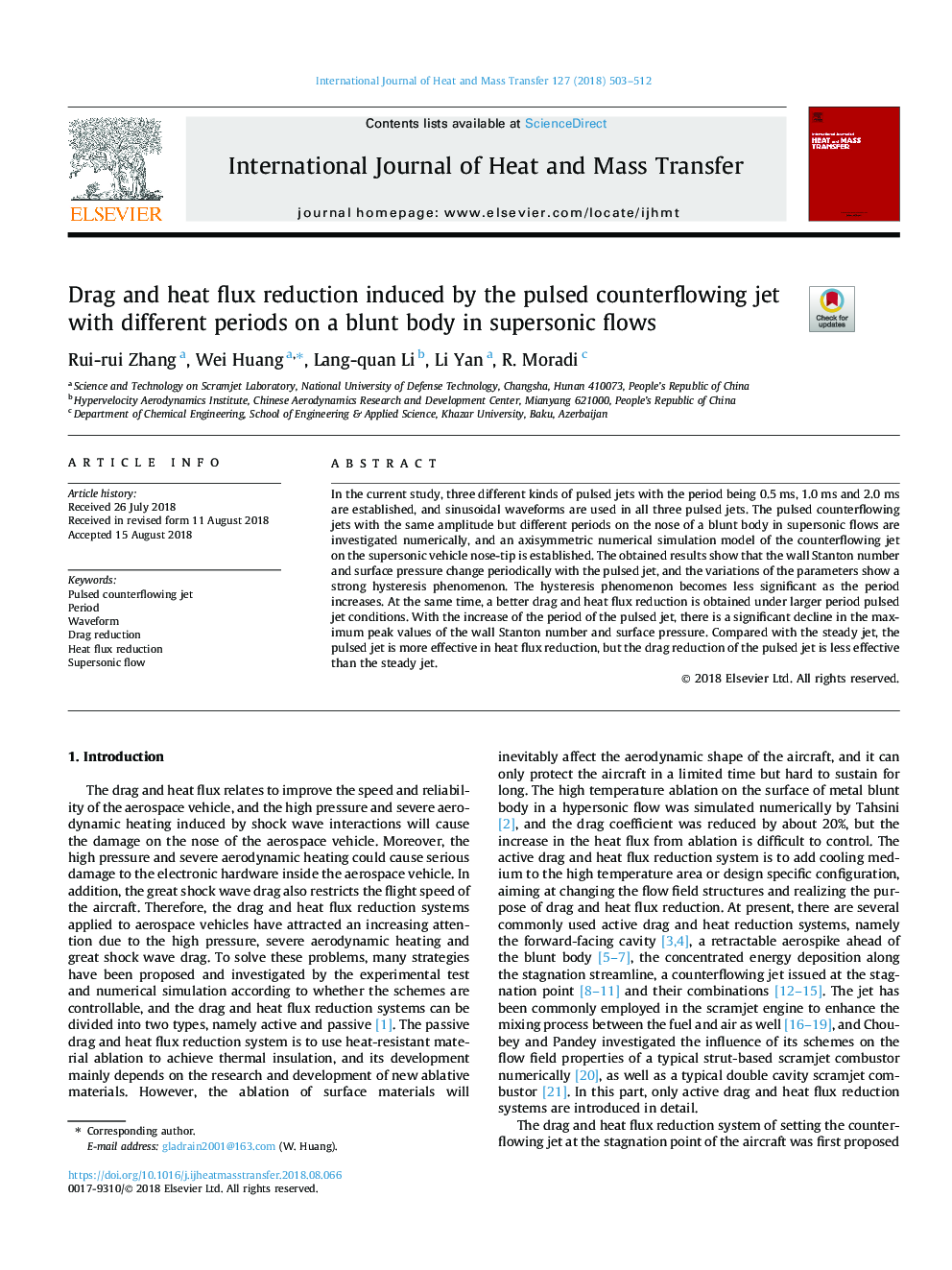| Article ID | Journal | Published Year | Pages | File Type |
|---|---|---|---|---|
| 8941999 | International Journal of Heat and Mass Transfer | 2018 | 10 Pages |
Abstract
In the current study, three different kinds of pulsed jets with the period being 0.5â¯ms, 1.0â¯ms and 2.0â¯ms are established, and sinusoidal waveforms are used in all three pulsed jets. The pulsed counterflowing jets with the same amplitude but different periods on the nose of a blunt body in supersonic flows are investigated numerically, and an axisymmetric numerical simulation model of the counterflowing jet on the supersonic vehicle nose-tip is established. The obtained results show that the wall Stanton number and surface pressure change periodically with the pulsed jet, and the variations of the parameters show a strong hysteresis phenomenon. The hysteresis phenomenon becomes less significant as the period increases. At the same time, a better drag and heat flux reduction is obtained under larger period pulsed jet conditions. With the increase of the period of the pulsed jet, there is a significant decline in the maximum peak values of the wall Stanton number and surface pressure. Compared with the steady jet, the pulsed jet is more effective in heat flux reduction, but the drag reduction of the pulsed jet is less effective than the steady jet.
Related Topics
Physical Sciences and Engineering
Chemical Engineering
Fluid Flow and Transfer Processes
Authors
Rui-rui Zhang, Wei Huang, Lang-quan Li, Li Yan, R. Moradi,
